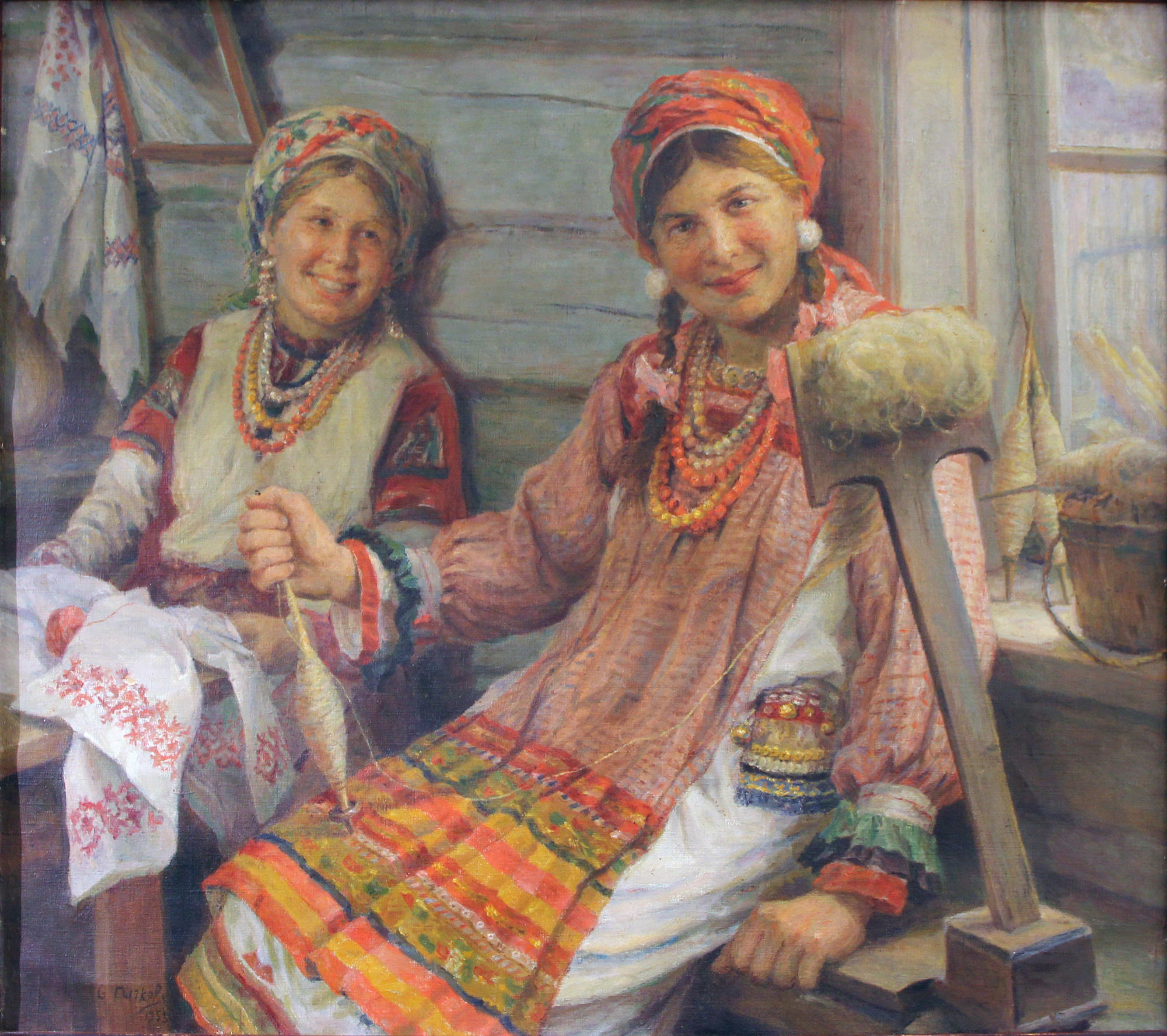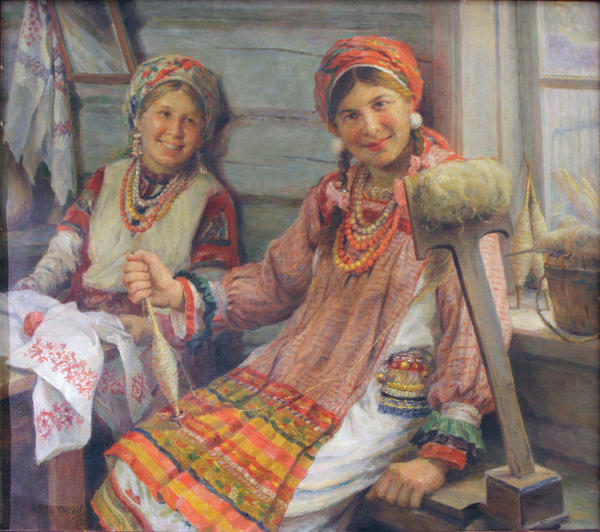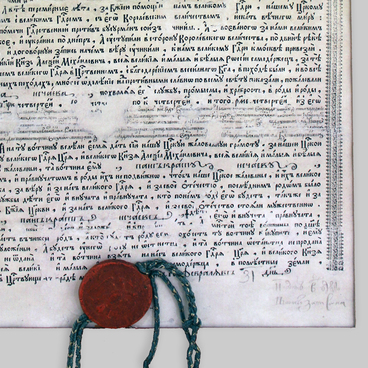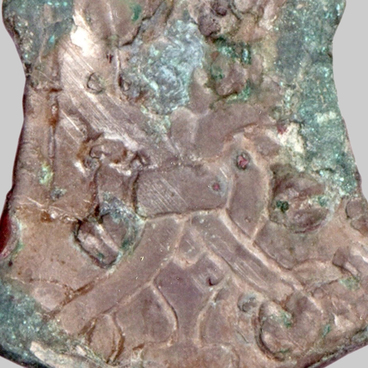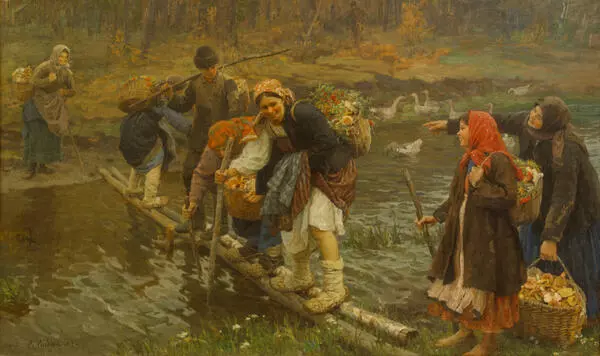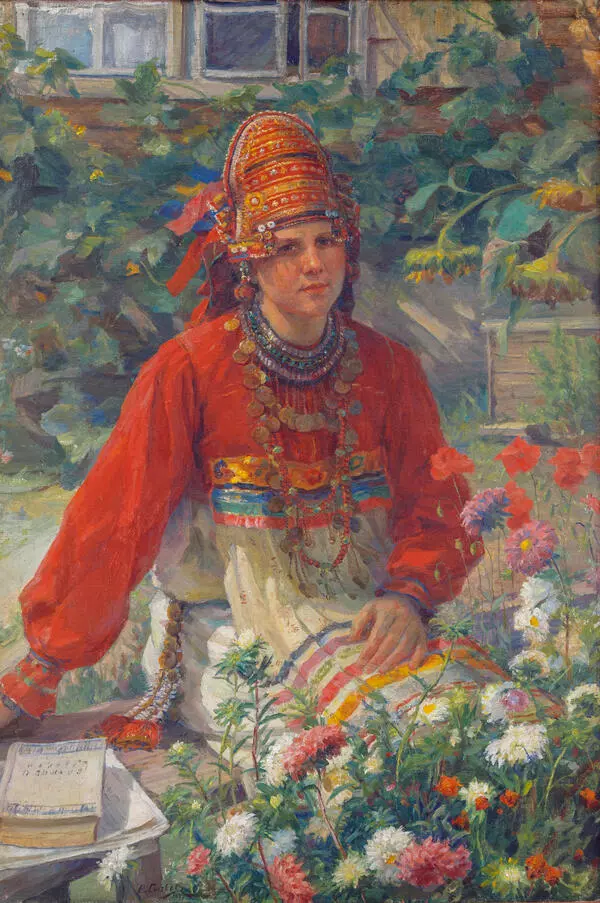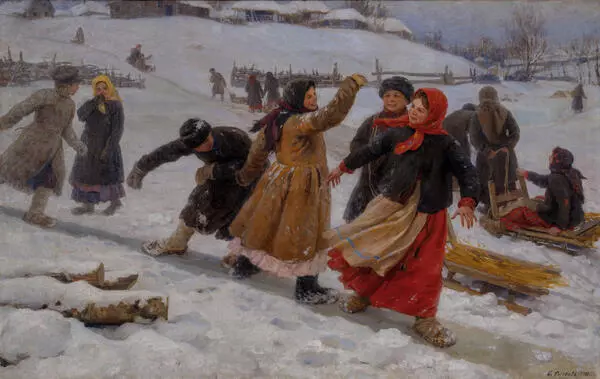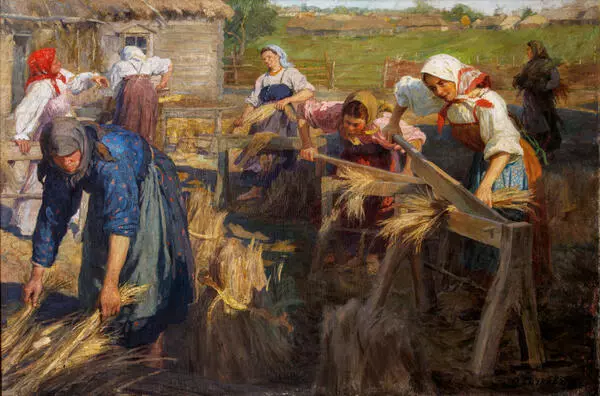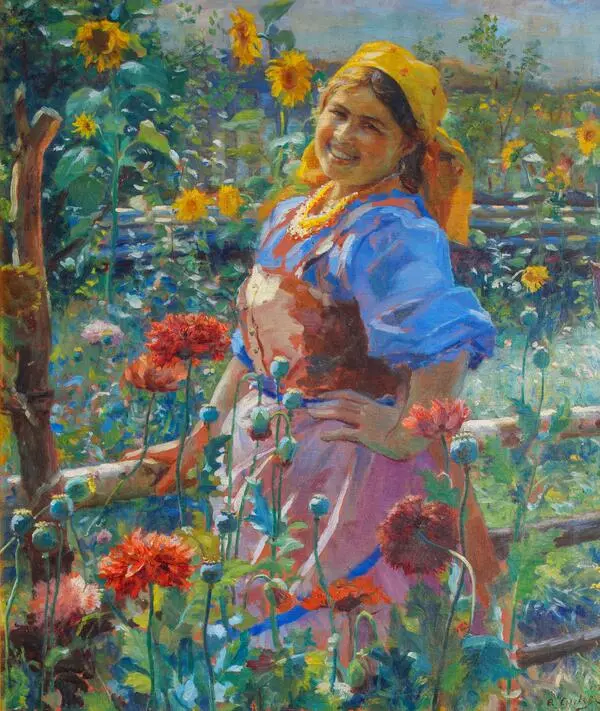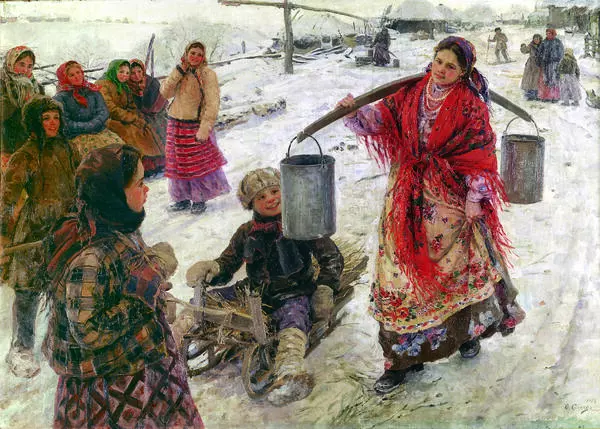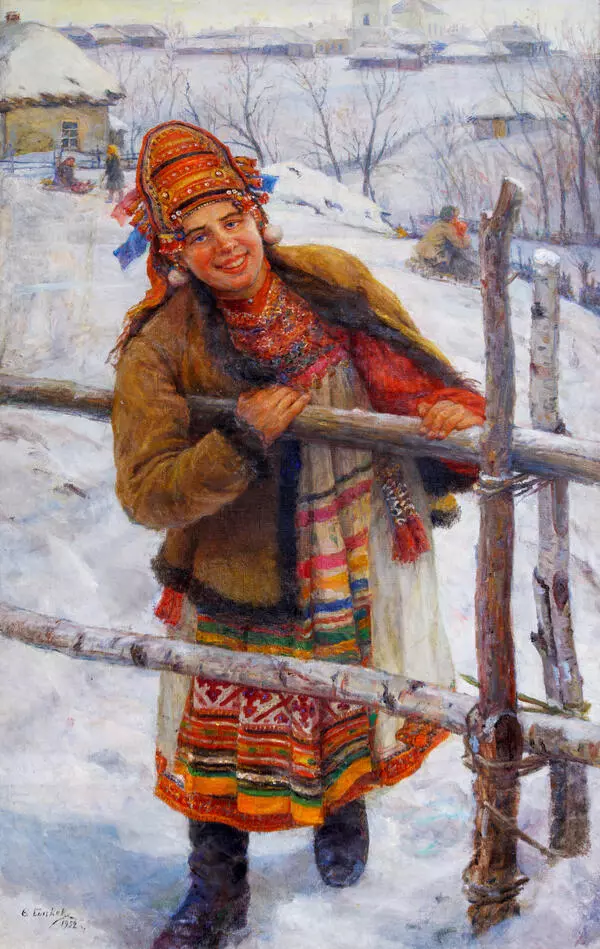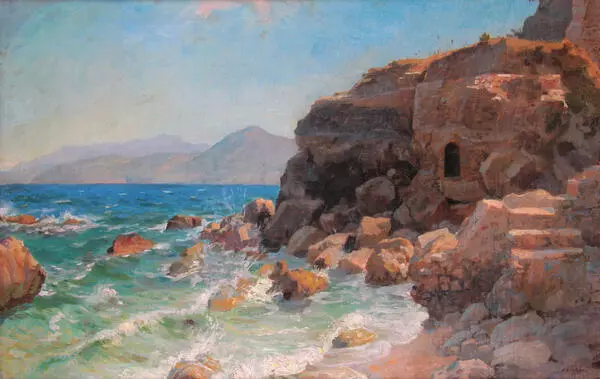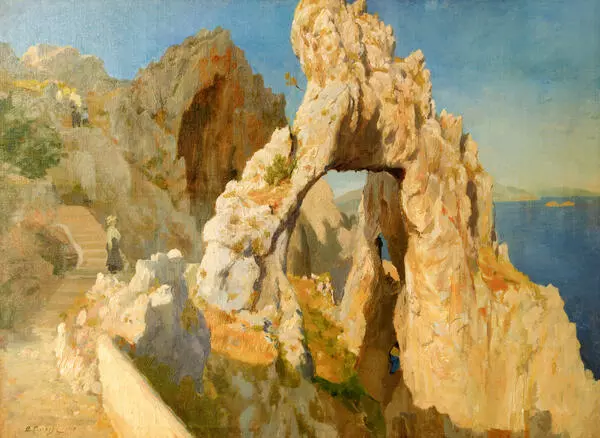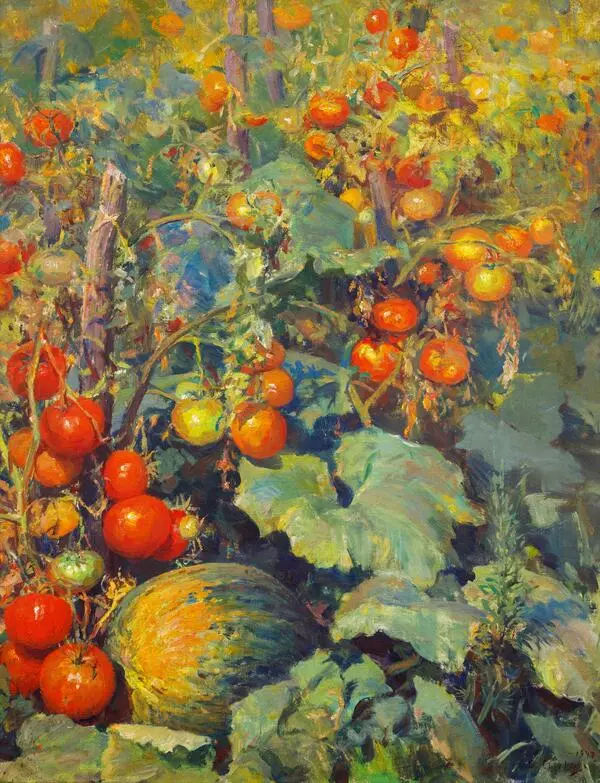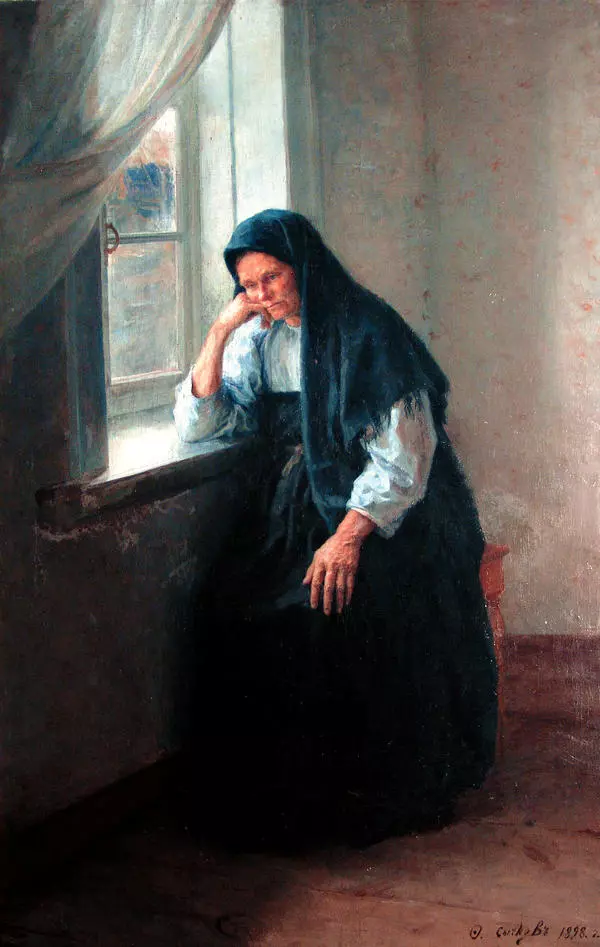Friends is one of the many works of Fedot Sychkov, dedicated to the peasant life of Mordovia. It is a replication of his early painting ‘At work. Friends. 1935’. The second canvas was painted by the artist at the age of 83. The Museum received the exhibit in 1969. He was a member of the personal archive of F. Fomkin, Doctor of Pedagogical Sciences, honored worker of science in the MASSR.
Sychkov was an original painter, a master of the coating technique (application of thin layers of paint on each other). The main lines in his work are the life and work of peasants. The artist wrote that he liked to depict ordinary people not only in work, but also to show their cheerfulness, fun, games. In the inexhaustible optimism of the common people, he saw great creative force. The master did not seek to depict perfect beauty. He created everyday and familiar images on canvas.
He was inspired by real characters, which preserved the memories of the ‘models’ - residents of the village Kochelaeva, where the artist was born. For example, Sophia Chizhikova recalls how the master sat under a bush with an easel and painted her with her friends swimming in the river. His favorite types were stout and smiling peasant women who looked openly, with enthusiasm and coquetry. This kind of women is depicted in the two versions of his painting.
The two-figure composition is common for Fedot Sychkov’s work. On the canvas, Friends there are also two images, which are depicted. They are united by a general elation and a familiar environment. The character in the corner is rather an addition to give the plot completeness. On the forefront, we can see a young girl with a spinning wheel, which carries the main semantic and emotional message. Here we can see the favorite angle of the master - body turned three quarters and the figures end at knee height.
Peasant women are dressed in national Mordovian costumes. With the formation of autonomy Sychkov became the first artist who began to create bright and memorable female images. In the late 1930s, he was awarded the title of honored artist of the MASSR and received a personal pension. But the appearance of Mordovian motives in his work was not a response to the recognition of the authorities. In one of the letters, the artist admitted that he was “purely Russian and had seen little of Mordovia”. But he was deeply interested in the life and history of this people.
The master studied the way and traditions of Mordovian peasants. It was necessary to create a realistic, authentic background. In the picture Friends he placed the heroines in a familiar environment — a peasant hut with its invariable attributes. Critics believe that the artist hasn’t paid much attention to the design. The image of the background in the pictures is often built from the same elements. But this does not indicate a lack of creative imagination. The heroines are people ordinary. And they are surrounded by what they see in their daily lives.
Sychkov was an original painter, a master of the coating technique (application of thin layers of paint on each other). The main lines in his work are the life and work of peasants. The artist wrote that he liked to depict ordinary people not only in work, but also to show their cheerfulness, fun, games. In the inexhaustible optimism of the common people, he saw great creative force. The master did not seek to depict perfect beauty. He created everyday and familiar images on canvas.
He was inspired by real characters, which preserved the memories of the ‘models’ - residents of the village Kochelaeva, where the artist was born. For example, Sophia Chizhikova recalls how the master sat under a bush with an easel and painted her with her friends swimming in the river. His favorite types were stout and smiling peasant women who looked openly, with enthusiasm and coquetry. This kind of women is depicted in the two versions of his painting.
The two-figure composition is common for Fedot Sychkov’s work. On the canvas, Friends there are also two images, which are depicted. They are united by a general elation and a familiar environment. The character in the corner is rather an addition to give the plot completeness. On the forefront, we can see a young girl with a spinning wheel, which carries the main semantic and emotional message. Here we can see the favorite angle of the master - body turned three quarters and the figures end at knee height.
Peasant women are dressed in national Mordovian costumes. With the formation of autonomy Sychkov became the first artist who began to create bright and memorable female images. In the late 1930s, he was awarded the title of honored artist of the MASSR and received a personal pension. But the appearance of Mordovian motives in his work was not a response to the recognition of the authorities. In one of the letters, the artist admitted that he was “purely Russian and had seen little of Mordovia”. But he was deeply interested in the life and history of this people.
The master studied the way and traditions of Mordovian peasants. It was necessary to create a realistic, authentic background. In the picture Friends he placed the heroines in a familiar environment — a peasant hut with its invariable attributes. Critics believe that the artist hasn’t paid much attention to the design. The image of the background in the pictures is often built from the same elements. But this does not indicate a lack of creative imagination. The heroines are people ordinary. And they are surrounded by what they see in their daily lives.
